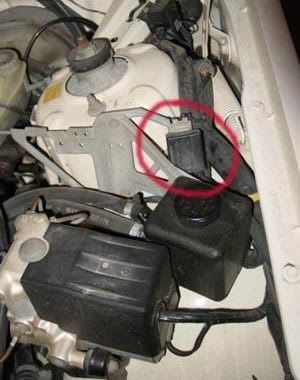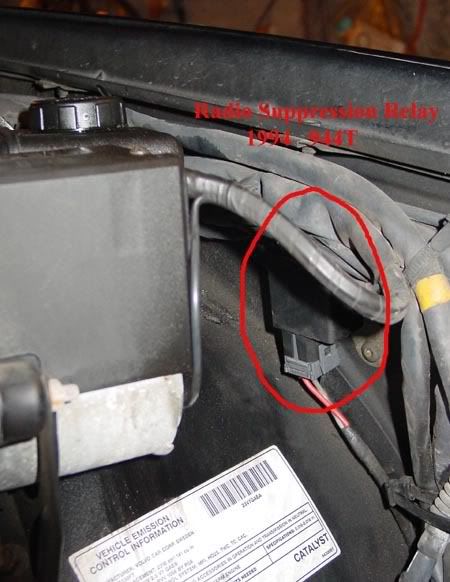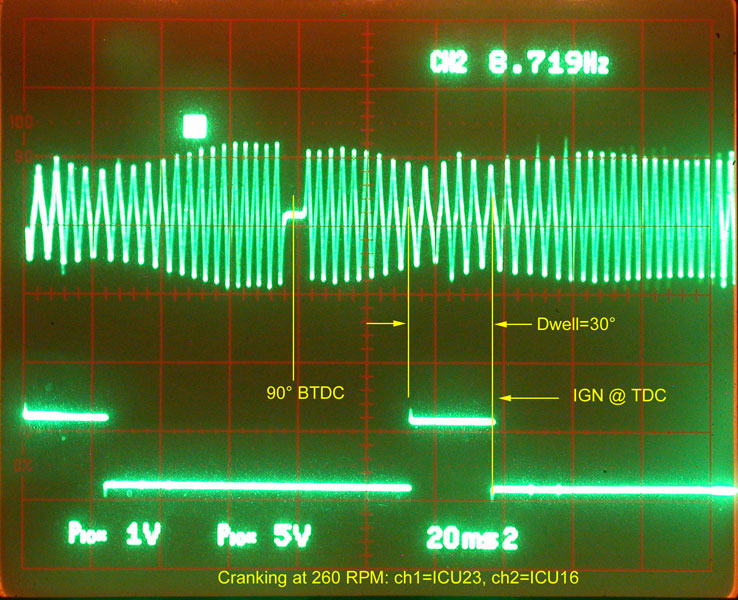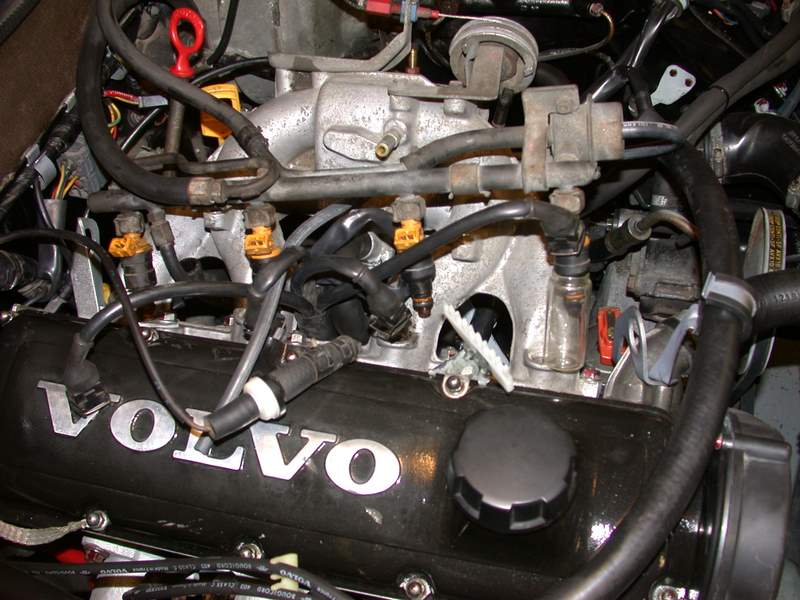|
|
|
Hi,
I'm trying to trace a no-start problem in a 1992 Volvo 940 Turbo, LH 2.4 ECU 0-280-000-937.
The problem is the fuel injectors aren't operating even though the spark plugs are firing and there is good fuel supply to the fuel rail.
Following the Bentley book's procedures for testing the pins at the ECU connector, I found there was no continuity between pins #9 and 18 (fuel injector ground). Bentley says 4 ohms should be present. There is continuity between pin 18 and the injectors themselves.
Two questions:
1. Does the above test (ie continuity) apply to the LH 2.4 Turbo ECU?
2. If so, is there any likely location for a fault in this circuit?
I'll note I've replaced the crankshaft position sensor and tested or swapped every component I can think of short of the ECU. I just want to settle a nagging doubt before moving to the next step of the ECU itself.
Thanks for any help.
|
|
-
|
|
|
Just to conclude this thread on a positive note.
Installed a used ECU this afternoon and the car started right away.
So thanks to Art and the others who time to reply, much appreciated.
Ken
|
|
-
|
|
|
I believe you will find the radio suppression relay located here on your 1992 turbo car (photo of location on a 1991 745T):

... but if not there then look here:

These relays respond well to opening up and resoldering the circuit board. As a diagnostic measure you can temporarily insert an insulated jumper wire in the sockets of the two heaviest gauge wires in the connector. If it starts with the jumper in place the relay is the cause.
Randy
|
|
-

|
|
Hi Ken,
What Bentley (a 240 manual) doesn't show you is the 7/9 series uses a relay under the hood to switch the +12 that is directly connected on the 2 series (pin 9).
The likely fault is the "radio suppression relay".
--
Art Benstein near Baltimore
You may be only one person in the world, but you may also be the world to one person.
|
|
-
|
|
|
Randy and Art,
Thanks for your replies.
I should have noted there is power getting up to the injectors which I assumed eliminates the underhood relay (Randy's second photo) as the problem point.
I've exchanged the underhood relay (plus a spare), fuel pump relay, ballast resistors and ignition stage module from my 89 740T into the 92 940 and visa versa. The 89 runs normally using the 92's parts.
But to be 101% sure I'll test the relay and injector voltage again. If it checks out, ECU?
Ken
(please ignore duplication of this post if any, I'm having trouble posting)
|
|
-

|
|
Guess I was going by the title of the thread, and your attempt to check continuity Bentley-style, knowing that won't apply to the 940.
Be sure that power you see at the injectors is present during your cranking attempts. If the plugs are still dry, make sure you are getting spark to at least two plugs. I'm not a 7/9 guy, but I have read a lot of posts here, and recall one trouble where the wire bringing the engine timing signal from the ICU to the ECU was pinched, so the ECU never really knew the motor was turning. This, I think, was a consequence of some under-the-dash work.
Anyway, no, you won't get continuity 9-18 through the injectors and ballast, because the RSR is not energized (hopefully) while you are using an ohmmeter on things. A squirt of starting fluid might be a quicker way to verify spark...
--
Art Benstein near Baltimore
A thief who stole a calendar got twelve months.
|
|
-
|
|
|
I was having trouble understanding how there could have been any continuity with the ignition off, as the test suggested, much less considering there was an additional relay. So, that helps in eliminating items to chase.
I'll check the other procedures noted. It was interesting to note in checking ECU pricing, the local Volvo dealer and two independant Volvo repair shops expressed strong reservations it was an ECU problem so I'm not trying to jump the gun. I'll post what I find. Thanks.
Ken
|
|
-

|
|
Ken, the more I think about it, that pinched wire episode was with an LH2.2 car where the ICU and ECU were across the hump from each other, I think - something that isn't so likely with yours.
I guess if I were in your shoes, I'd find it easier to try Randy's trick of jumpering out the two heavy pins on the RSR - and make sure you do have the RSR and not the fan relay - as an easier alternative to trying to backprobe the injector wires while attempting to start the motor. This is just from reading dozens of posts where the RSR caused the trouble. No doubt you've seen them too.
--
Art Benstein near Baltimore
Wear short sleeves! Support your right to bare arms!
|
|
-

|
|
"Ken, the more I think about it, that pinched wire episode was with an LH2.2 car where the ICU and ECU were across the hump from each other, I think - something that isn't so likely with yours."
Hi Art,
Sounds like you're referring to "Dogsloose" and his 89 740 with LH 2.4, which I believe is the same layout as Ken's '92 940, per the '93 green book WD's.
In that thread, he (Don Lewis) said:
"In the 740 the computer modules are on opposite sides of the cockpit, so the harness runs up and through a very tight space behind the dash board. I prefer to pull it out and find what esle might be damaged but I'm afraid in pulling apart the harness that I'll screw something up....we'll see."
So you may be on to something. And Ken's "good fuel supply to the rail" may just be from getting "prime" cycles at Key On.
--
Bruce Young, '93 940-NA (current), 240s (one V8), 140s, 122s, since '63.
|
|
-

|
|
Bruce, you sure do have a sharp memory. Yes.
Thank you.
--
Art Benstein near Baltimore
To err is human, to moo bovine.
|
|
-
|
|
|
When checking the connector pin #1, engine cranking, the voltage fluctuated between 5-6 volts. Bentley's (again 240) states 8 volts minimum. But at that point the battery was declining. I did choose to replace the crankshaft sensor partially as a result of this reading but as the pumps were running on this and prior cranking I assumed it was getting the voltage the ECU needed.
But Art's point about the ICU connection bears a re-check of the voltage at pin 1. I assume it should read battery voltage?
I disconnected the intake line at the fuel rail and both observed and ran the line into a container, I'd say it's getting very good pressure, no real doubt. I used a separate single injector harness to test operation of the injectors themselves and at least the first two operated on residual pressure in the rail when manually grounded. But again worth checking by gauge.
Ken
|
|
-

|
|
Ken,
That voltage you see fluctuating on pin 1 is OK. Here's what a very similar signal from the ICU looks like on a scope, so you can see why anyone's digital meter is going to give varied responses, just like the guy got when he measured it for the Volvo book:

I recall looking at both 16 and 17, 17 being the one that goes to ECU-1, and if there was any difference (bottom trace), it may have been the duty cycle and amplitude. Anyway, the ECU just needs the repetition to time the injectors and keep the pumps running. If the pumps continue to run throughout cranking, the signal at pin 1 is doing the job.
You could connect a test light between injector common (ECU-18) and battery positive, and see the pulses to the injectors just like having a noid light.
--
Art Benstein near Baltimore
I fired my masseuse today. She just rubbed me the wrong way.
|
|
-
|
|
|
Art,
That's a beautiful thing.
Just came back from re-testing.
Separated the white plastic connector block beween the rsr relay and the ballast block and connected two jumpers: one to the gray power lead from the rsr relay to the ballast and one from the ballast to each of the injector leads in sequence. I pulled the plugs on the injector and inserted a voltmeter to the power side of each plug. Readings were 12.7 volts per injector when cranking only (I jumped the battery when making the tests).
Confirmed all plugs fired using a set of test lamps attached to the lead and the plugs.
Retested pin 1 ECU and as you note, voltage fluctuates around 6 volts.
If I correctly understand your test at ECU-18, if pulsing was present wouldn't this determine the ECU was OK as far as its portion of the injector circuit was concerned?
Ken
|
|
-

|
|
I'm not certain I follow your test and results.
The idea was to determine the battery was being delivered to the injectors, and then a light connected as if it was an injector, would show they were being actuated.
I know they are nearly impossible to hear over the noise of cranking - at least for me, with significant hearing loss. Can you just use the diagnostic box option 3 to cycle them? Do you know about that test? I am assuming it applies to the 900 turbo just as it does to my 240s.

(PS - to do the test as I show above you have to temporarily relocate the ground wires normally held by the rail mounting screws.)
--
Art Benstein near Baltimore
A hangover is the wrath of grapes.
|
|
-
|
|
|
Although a little awkward to explain, the purpose of my test was simply to confirm voltage was getting through the underhood relay and onto the injector.
I missed the step you note. Although I'm sure the injectors aren't operating on cranking, I see your test confirms whether the ECU is supplying ground. Sort of obvious after being pointed out, arghh.
I'm not aware of the diagnostic box option, I'd appreciate if you could desribe or suggest a link. Thanks.
Ken
|
|
-
|
|
|
YES, I would hardily back Art's suggestion to use the diagnostics to test the injectors. I've done it and you can hear them easily.
Also, just to make sure I understand how the injector power works, 12volts is applied through the relay, and the ECU grounds the other terminal of the injector to open them ( opens all at the same time, is this pin 18?).
Anyway, one could disconnect the ECU, apply the 12volts, and ground the other terminal of the injectors by hand, and see if the injectors open.
|
|
-
|
|
|
Hi,
Art is better positioned to answer this but I'll jump in. Your description of the operation of the injectors is my understanding as well, that is, they depend on ground at pin 18 and all open at the same time.
The injectors on my car will click quite audibly if manually grounded. The question is whether they are getting any ground from pin 18 of the ECU. I'm interested to see how the diagnostics test works.
Ken
|
|
|
|
|






